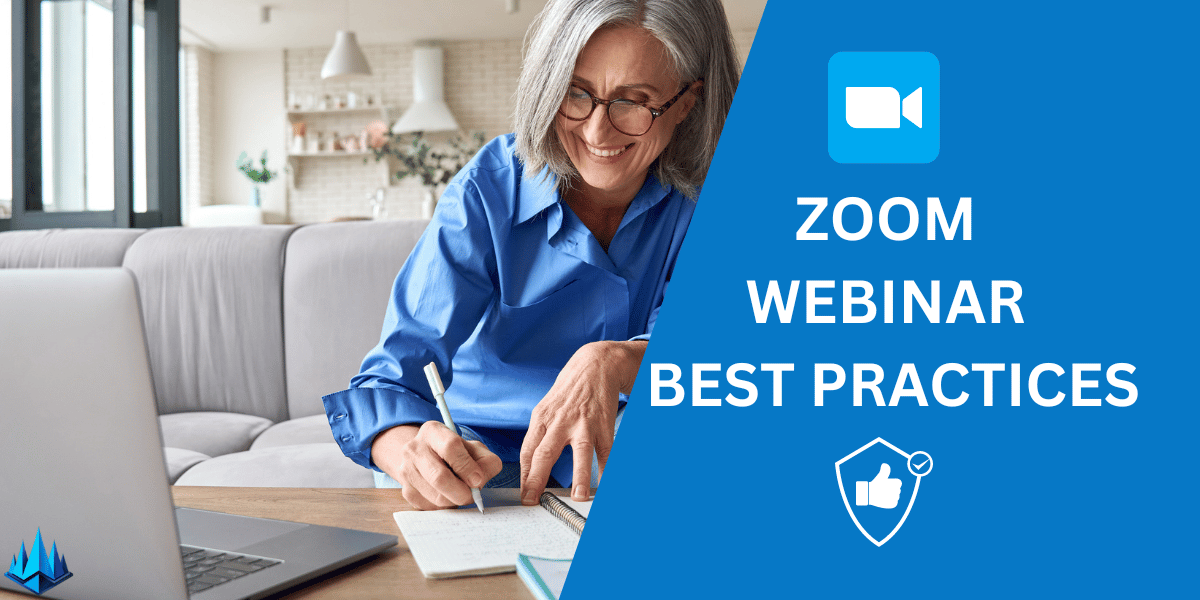If you’re looking to start a new exercise routine or want to improve your overall health and wellness, yoga is a great place to start. Yoga is an ancient practice that has been around for centuries and has been proven to offer numerous physical and mental health benefits. Whether you’re a beginner or an experienced practitioner, there is always something new to learn about yoga.
At its core, yoga is a practice that combines physical postures, breathing techniques, and meditation to help you achieve a state of balance and harmony in your mind and body. There are many different styles of yoga, each with its unique postures and techniques. Some classes are more physically challenging, while others focus more on relaxation and meditation. Regardless of which type you choose, the basic principles of yoga remain the same.
Knowing where to start can be overwhelming if you’re new to yoga. We’ve put together this guide to help you understand the basics of stretching with yoga and start your practice. In the following sections, we’ll cover everything from the history and philosophy of yoga to the different styles of postures and breathing techniques. By the end of this guide, you’ll have a solid knowledge foundation to help you start your yoga practice.
Key Takeaways
- Yoga is an ancient practice that combines physical postures, breathing techniques, and meditation.
- There are many different styles of yoga, each with its unique postures and techniques.
- This guide will provide you with a solid foundation of knowledge to help you start your yoga practice.
Understanding The Basics of Yoga
Yoga is a spiritual practice that originated in ancient India. It is a science of self-realization that aims to unite the body, mind, and soul. “yoga” means union, and yoga is about achieving a state of cooperation or harmony between the individual and the universe.
There are many different yogic practices, including physical postures (asanas), breathing exercises (pranayama), meditation (dhyana), and self-inquiry (svadhyaya). These practices help you connect with your inner self, develop self-awareness, and cultivate inner peace and happiness.
Yoga is not a religion but a spiritual practice that can be practiced by people of all faiths or no religion at all. This holistic practice can benefit your physical, mental, and emotional health.
Getting the most out of yoga requires commitment, repetition, and consistency. It cannot be learned overnight, but with regular practice, you can experience the benefits of yoga in your life.
Yoga is a science that has been studied for thousands of years, and a growing body of research supports its effectiveness in promoting health and well-being. Whether you want to reduce stress, improve flexibility, or find inner peace, yoga can be a powerful tool to help you achieve your goals.
Starting with Yoga: A Guide for Beginners
If you’re new to yoga, it can be overwhelming to know where to start. But don’t worry; with a bit of practice, patience, and focus, you’ll soon be on your way to mastering the basics of yoga. Here are some tips to help you get started:
Set an Intention
Before you begin your practice, take a moment to set an intention. This can be as simple as focusing on your breath or as specific as dedicating your practice to someone or something. Putting a will can help you stay focused and motivated throughout your training.
Choose a Style
There are many styles of yoga to choose from, each with its unique benefits and challenges. Some popular techniques for beginners include Hatha, Vinyasa, and Yin yoga. Take some time to research different types and try a few classes to find the one that resonates with you.
Practice Patience
Remember that yoga is a practice, not a competition. It takes time and patience to build strength, flexibility, and balance. Don’t get discouraged if you can’t do a pose right away or if you can’t hold it for as long as you’d like. With consistent practice, you’ll see progress over time.
Focus on Breath
One of the most important aspects of yoga is breath control. Pay attention to your breath throughout your practice, and try to synchronize your movements with your breath. This can help you stay focused and calm and can also help you deepen your practice.
Relax and Let Go
Yoga is also a great way to release tension and stress. As you move through your practice, try to let go of any thoughts or worries and focus on the present moment. Use your breath to help you relax and release any tension in your body.
Beginner Poses
Some beginner yoga poses to get you started include:
- Mountain Pose (Tadasana)
- Downward-Facing Dog (Adho Mukha Svanasana)
- Child’s Pose (Balasana)
- Warrior I (Virabhadrasana I)
- Tree Pose (Vrksasana)
These poses are great for building strength, flexibility, and balance and can be modified to suit your needs and abilities.
Remember, the most important thing is to listen to your body and make choices that feel good for you. With some practice and patience, you’ll soon be on your way to a fulfilling and rewarding yoga practice.
Yoga Poses and Postures
Yoga is a physical, mental, and spiritual practice that aims to improve overall health and well-being. The yoga method involves various poses, also known asanas, to stretch and strengthen different body parts. This section will discuss some of the most common yoga poses and postures.
Mountain Pose
Mountain Pose, also known as Tadasana, is a foundational pose in yoga often used as a starting position or resting pose. This pose helps to improve posture, balance, and concentration. To perform this pose, stand with your feet together, arms at your sides, and gaze forward. Press your feet into the ground, engage your leg muscles, and lift your chest.
Warrior I and II
Warrior I and II are two standing poses often used in yoga sequences. Warrior I, or Virabhadrasana I, helps strengthen the legs, arms, and core, while Warrior II, or Virabhadrasana II, helps stretch the hips and thighs. To perform Warrior I, step your right foot forward, bend your right knee, and extend your arms overhead. To perform Warrior II, step your feet wide apart, turn your right foot out, and bend your right knee. Extend your arms out to the sides and gaze over your right hand.
Downward-Facing Dog
Downward-Facing Dog, or Adho Mukha Svanasana, is a famous pose in yoga that helps to stretch the hamstrings, calves, and spine. To perform this pose, start on your hands and knees, with your wrists under your shoulders and your knees under your hips. Press your hands into the ground, lift your hips and back, and straighten your arms and legs. Gaze towards your belly button.
Cow and Cat Pose
Cow and Cat Pose, or Bitilasana and Marjaryasana, are often performed together to stretch the spine and improve flexibility. To perform Cow Pose, start on your hands and knees, with your wrists under your shoulders and your knees under your hips. Inhale and arch your back, lifting your head and tailbone towards the ceiling. To perform Cat Pose, exhale and round your spine, tucking your chin to your chest and bringing your tailbone towards your knees.
Tree Pose
Tree Pose, or Vrksasana, is a balancing pose in yoga that helps to improve focus and stability. To perform this pose, stand with your feet together, shift your weight onto your left foot, and place your right foot on your left thigh. Press your foot into your thigh, engage your leg muscles, and bring your hands to your heart center.
Corpse Pose
Corpse Pose, or Savasana, is a relaxation pose in yoga that is often used at the end of a yoga practice. This pose helps to reduce stress and promote relaxation. To perform this pose, lie on your back with your arms at your sides, and palms facing up. Close your eyes, and focus on your breath. Allow your body to relax completely.
Incorporating these yoga poses and postures into your practice can help to improve your overall health and well-being. Always listen to your body and modify the poses as needed to suit your needs and abilities.
The Health and Wellness Benefits of Yoga
Yoga is a popular form of exercise that has been around for centuries. It is known for its many health and wellness benefits. Here are a few ways that practicing yoga can improve your overall well-being:
Strength, Flexibility, and Balance
One of the primary benefits of yoga is that it can improve your strength, flexibility, and balance. Yoga poses are designed to work your muscles in new and challenging ways. As you hold a pose, you are building strength in the muscles that support that part of your body. Over time, this can help you become more robust and more flexible. Additionally, many yoga poses require you to balance on one foot or hand, which can improve your overall balance and coordination.
Stamina and Mobility
Yoga can also help improve your stamina and mobility. Many yoga poses require you to hold a position for an extended period. This can help build endurance and increase your overall energy. Additionally, yoga can help improve your mobility and range of motion. By stretching and moving your body in new ways, you can help keep your joints healthy and flexible.
Lower Back and Back Muscles
If you suffer from lower back pain, yoga may be able to help. Many yoga poses are designed to stretch and strengthen the muscles in your lower back. This can help alleviate pain and improve your overall back health. Additionally, yoga can help boost your back muscles, which can help improve your posture and reduce the risk of injury.
Overall, practicing yoga can have many health and wellness benefits. From improving your strength, flexibility, and balance to reducing lower back pain, yoga can help you feel physically and mentally better.
The Mind-Body Connection in Yoga
Yoga is often associated with the mind-body connection, the inseparable link between our thoughts, emotions, and physical sensations. It is the idea that our mental state can affect our physical health and vice versa. When we experience stress, anxiety, or other negative emotions, it can manifest in physical symptoms such as headaches, muscle tension, or digestive issues.
You can cultivate awareness of your body and mind through yoga and develop a deeper understanding of the mind-body connection. By practicing yoga, you can improve your body awareness and develop mindfulness, which can help you find peace, calm, and inner joy.
Yoga can also cultivate compassion and gratitude towards yourself and others. As you become more aware of your body and mind, you may become more accepting of yourself and your limitations and more empathetic towards others.
In yoga, poses are often held for extended periods, allowing you to tune into your physical sensations and develop a deeper connection with your body. By focusing on your breath and being present in the moment, you can quiet your mind and find inner peace.
Overall, the mind-body connection is an integral part of yoga practice. By cultivating awareness of your body and mind, you can find peace, calm, and inner joy and develop compassion and gratitude towards yourself and others.
Breathing Techniques in Yoga
Breathing is an essential part of practicing yoga. It helps you to connect with your body, focus your mind, and improve your overall well-being. In yoga, breathing techniques are called pranayama, which means “control of the life force.” Here are a few breathing techniques commonly used in yoga:
Ujjayi Pranayama
Ujjayi Pranayama is also known as “Victorious Breath” or “Ocean Breath.” It involves breathing in and out through your nose, with a slight constriction in the back of your throat. This creates a sound similar to the ocean waves. Ujjayi Pranayama helps to calm the mind, reduce stress, and increase oxygenation in the body.
Kapalabhati Pranayama
Kapalabhati Pranayama is also known as “Breath of Fire.” It involves rapid, forceful exhalations through your nose, followed by passive inhalations. This technique helps to increase energy, clear the mind, and detoxify the body.
Dirga Pranayama
Dirga Pranayama is also known as “Three-Part Breath.” It involves breathing deeply into your belly, then your chest, and finally your upper chest. This technique helps to calm the mind, reduce stress, and increase oxygenation in the body.
Nadi Shodhana Pranayama
Nadi Shodhana Pranayama is also known as “Alternate Nostril Breathing.” It involves breathing in through one nostril, holding your breath, and then exhaling through the other. This technique helps to balance the left and right sides of your body, calm the mind, and reduce stress.
In yoga, breathing techniques are used with physical postures to create a holistic practice that benefits both the body and mind. Incorporating these techniques into your yoga practice can improve your breathing, reduce stress, and increase your overall well-being.
Yoga Props and Equipment
Having the right equipment to support your practice is crucial when practicing yoga. The most essential equipment is a yoga mat, which provides a non-slip surface for your practice and helps cushion your joints during floor poses. A good quality yoga mat should be durable, non-slip, and comfortable.
In addition to a yoga mat, various yoga props can help you deepen your practice and improve your alignment. Some of the most common yoga props include:
- Yoga blocks: These are rectangular foam blocks that can be used to support your hands, feet, or hips during poses. They can help you maintain proper alignment and make poses more accessible.
- Yoga straps: These long straps can help deepen your stretches and improve your flexibility. They can also help you maintain proper alignment in poses where you can’t reach your feet or hands.
- Yoga blankets are soft, supportive blankets that can cushion your joints during floor poses or support your body in restorative poses.
- Yoga bolsters: These large, firm pillows can support your body in restorative poses or help you deepen your stretches.
While yoga props are not essential for every practice, they can accommodate beginners or those with limited flexibility or mobility. Using props can help you maintain proper alignment, prevent injury, and make poses more accessible.
When choosing yoga props, looking for high-quality, durable, lasting products is essential. You should also consider the support’s size and shape to ensure it works well for your body and practice.
Investing in a few key yoga props can help deepen your practice and improve your alignment, making it a worthwhile investment for any yogi.
Different Styles of Yoga
If you’re new to yoga, the different styles of yoga can be overwhelming. Here’s a brief overview of some of the most popular types of yoga:
Hatha Yoga
Hatha yoga is a gentle, slower-paced style that’s great for beginners. It focuses on basic postures and breathing techniques. Hatha yoga is perfect for those who want to improve their flexibility, balance, and strength.
Vinyasa Yoga
Vinyasa yoga is a more dynamic and flowing style of yoga. It’s great for those who want to get their heart rate up and work up a sweat. In vinyasa yoga, you’ll move from one pose to the next in a fluid, continuous motion.
Ashtanga Yoga
Ashtanga yoga is a physically demanding style for those who want to challenge themselves. It involves a set sequence of postures performed in the same order every time. Ashtanga yoga is great for building strength, flexibility, and endurance.
Bikram Yoga
Bikram yoga, also known as hot yoga, is a style of yoga performed in a room heated to 105 degrees Fahrenheit. It involves a set sequence of 26 postures and two breathing exercises. Bikram yoga is great for improving flexibility, strength, and balance.
Hot Yoga
Hot yoga is similar to Bikram yoga, but it’s not as strict regarding the sequence of postures. Hot yoga is performed in a room heated to around 95-100 degrees Fahrenheit. It’s great for those who want to improve their flexibility and strength while working up a sweat.
Hatha Yoga
Hatha yoga is a traditional style of yoga that focuses on basic postures and breathing techniques. It’s great for those who want to improve their flexibility, balance, and strength. Hatha yoga is also great for those who want to reduce stress and improve their well-being.
No matter which style of yoga you choose, remember that yoga is a practice, not a competition. Listen to your body, and don’t push yourself too hard. With practice, you’ll find that yoga can significantly improve your physical and mental health.
Yoga Sutras and Principles
Yoga Sutras are the foundational text of yoga. Composed by the sage Patanjali, the Yoga Sutras are a collection of 196 aphorisms that outline the eight limbs of yoga. These limbs are a guide to living a meaningful and purposeful life. The eight limbs are:
- Yama – ethical standards and moral codes
- Niyama – self-discipline and spiritual observances
- Asana – physical postures
- Pranayama – breath control
- Pratyahara – withdrawal of the senses
- Dharana – concentration
- Dhyana – meditation
- Samadhi – union with the divine
The first two limbs, Yama and Niyama, are often called the “do’s and don’ts” of yoga. Yama consists of five ethical standards that guide our behavior towards others. These include Ahimsa (non-violence), Satya (truthfulness), Asteya (non-stealing), Brahmacharya (celibacy or chastity), and Aparigraha (non-greed). Niyama consists of five spiritual observances that guide our behavior towards ourselves. These include Saucha (cleanliness), Santosha (contentment), Tapas (austerity), Svadhyaya (self-study), and Ishvara Pranidhana (surrender to a higher power).
The remaining six limbs focus on physical and mental practices that lead to spiritual growth. Asana, the physical posture, is the West’s most well-known aspect of yoga. However, the practice of asana is just one limb of yoga. Pranayama, the breath control practice, helps calm the mind and increase vitality. Pratyahara, the withdrawal of the senses, helps to quiet the mind and turn inward. Dharana, the practice of concentration, helps to focus the mind and prepare for meditation. Dhyana, the practice of meditation, helps to cultivate awareness and stillness. Samadhi, the ultimate goal of yoga, is a state of oneness with the divine.
In addition to the eight limbs, four principles of yoga form the base of its practices. These principles underline the holistic approach of yoga in modern times. The four basic principles are:
- The human body is a holistic entity comprised of various interrelated dimensions inseparable from one another, and the health or illness of any one size affects the others.
- The human being is a self-regulating and self-healing organism capable of maintaining good health and recovering from illness.
- The body and mind are intimately connected, and the state of one affects the state of the other.
- The human being can enhance healing processes through natural means, including yoga, meditation, and other holistic practices.
By understanding the principles and the eight limbs of yoga, you can begin to incorporate yoga into your daily life, both on and off the mat.
Yoga as a Therapeutic Practice
Yoga is not just a physical exercise but a therapeutic practice that has been used for centuries to improve mental and physical well-being. Yoga therapy is a type of therapy that uses yoga postures, breathing exercises, meditation, and guided imagery to improve mental and physical health. It is an inherently holistic approach, simultaneously working on the body, mind, and spirit.
Stress is a common problem that many people face in their daily lives. Yoga therapy can be an effective way to manage stress. Yoga postures, breathing exercises, and meditation can help you relax and reduce stress. Yoga therapy can also help you develop a more positive attitude towards life and increase your acceptance of things you cannot change.
Relaxation is an essential aspect of yoga therapy. Yoga postures, breathing exercises, and meditation can help you relax and calm your mind. This can help you sleep better, reduce anxiety, and improve your overall quality of life. Yoga therapy can also help you develop a more profound self-awareness and self-acceptance.
Acceptance is a critical component of yoga therapy. Yoga teaches us to accept ourselves and others as they are, without judgment. This can help us develop a positive attitude towards life and increase our well-being. Yoga therapy can also help us better understand ourselves and our place in the world.
In conclusion, yoga therapy is a powerful tool that can help you improve your mental and physical well-being. It can help you manage stress, relax, and develop a positive attitude. If you want to explore yoga therapy, consider finding a qualified yoga therapist who can work with you to create a personalized treatment plan.
Meditation and Mindfulness in Yoga
Meditation and mindfulness are integral parts of yoga. They help you to quiet your mind, focus your thoughts, and connect with your inner self. Meditation calms the mind by focusing on a specific object, idea, or activity. Mindfulness is the practice of being present in the moment and fully aware of your thoughts, feelings, and surroundings.
In yoga, meditation and mindfulness are often combined with physical postures (asanas) and breathing exercises (pranayama) to create a holistic practice that promotes physical, mental, and emotional well-being. Regular meditation and mindfulness can improve concentration, reduce stress and anxiety, and cultivate inner peace and harmony.
The teacher may guide you through meditation or mindfulness practice during a yoga class. This may involve focusing on your breath, repeating a mantra, or visualizing a peaceful scene. These practices help you quiet your mind, let go of distractions, and connect with your inner self.
At the end of a yoga class, you may hear the word “Namaste” spoken. This is a traditional Indian greeting that means “I bow to you.” It is a way of showing respect and gratitude to your teacher and fellow students. It also reminds us that we are all connected and part of a larger whole.
In summary, meditation and mindfulness are essential components of yoga that can help you to quiet your mind, reduce stress, and connect with your inner self. By incorporating these practices into your yoga routine, you can cultivate inner peace and harmony that will benefit you both on and off the mat.
Advanced Yoga Practices
Once you have built a solid foundation in your yoga practice, you may be ready to explore advanced yoga practices. These practices require a high level of discipline and commitment and should only be attempted by experienced yogis who are physically and mentally prepared.
One aspect of advanced yoga is the use of Sanskrit terminology. This ancient language describes the practice’s poses, asanas, and other aspects. It can be helpful to learn some basic Sanskrit terms to deepen your understanding of the practice.
Another aspect of advanced yoga is using mudras or hand gestures, which can help channel energy in the body. Some common mudras include the Gyan mudra, which is formed by touching the tip of the index finger to the tip of the thumb, and the Chin mudra, which is formed by connecting the tip of the index finger to the tip of the thumb, with the other three fingers extended.
Chanting is also a common practice in advanced yoga. This can involve repeating mantras or sacred sounds to help focus the mind and connect with a higher power. Some common mantras include “Om,” which represents the sound of the universe, and “Lokah Samastah Sukhino Bhavantu,” which means “may all beings everywhere be happy and free.”
Advanced yoga practices can be physically demanding and include challenging poses such as inversions and arm balances. It is essential to approach these poses with caution and respect for your body and to work with a qualified teacher who can guide you safely through the practice.
Overall, advanced yoga practices require dedication, discipline, and a willingness to explore the deeper aspects of the practice. If you are ready to take your yoga practice to the next level, consider incorporating some of these advanced practices into your routine.
Frequently Asked Questions
What are some basic yoga poses for beginners?
If you are new to yoga, it is best to start with introductory poses that are easy to learn and perform. Some of the most popular beginner yoga poses include downward-facing dog, mountain pose, warrior I, and child’s pose. These poses will help you build strength, flexibility, and balance.
How can I start practicing yoga on my own?
Starting a yoga practice alone can be intimidating, but it is possible with the right resources. You can find many free yoga videos and tutorials online designed for beginners. You can also invest in a yoga mat and basic props like blocks and straps to help you get started.
What is the best type of yoga for beginners?
There are many different types of yoga, but some are better suited for beginners than others. Hatha yoga is a gentle form that is great for beginners because it focuses on basic poses and breathing techniques. Vinyasa yoga is also a good option for beginners because it is a flowing style that can help you build strength and flexibility.
Are there any free resources for learning yoga?
Yes, there are many free resources available online for learning yoga. YouTube is a great place to start, as many yoga channels offer free videos and tutorials. Many websites provide free yoga classes and resources for beginners.
What are some standard rules to follow during a yoga practice?
When practicing yoga, it is essential to follow some basic rules to ensure you practice safely and effectively. Some standard rules include listening to your body, practicing on an empty stomach, wearing comfortable clothing, and staying hydrated.
How can I teach myself yoga effectively?
Teaching yourself yoga can be challenging, but it is possible with the right approach. It is essential to start with basic poses and build your practice gradually. You can also seek online resources and tutorials to help you learn new postures and techniques. Listening to your body and practicing regularly to see progress is also essential.











